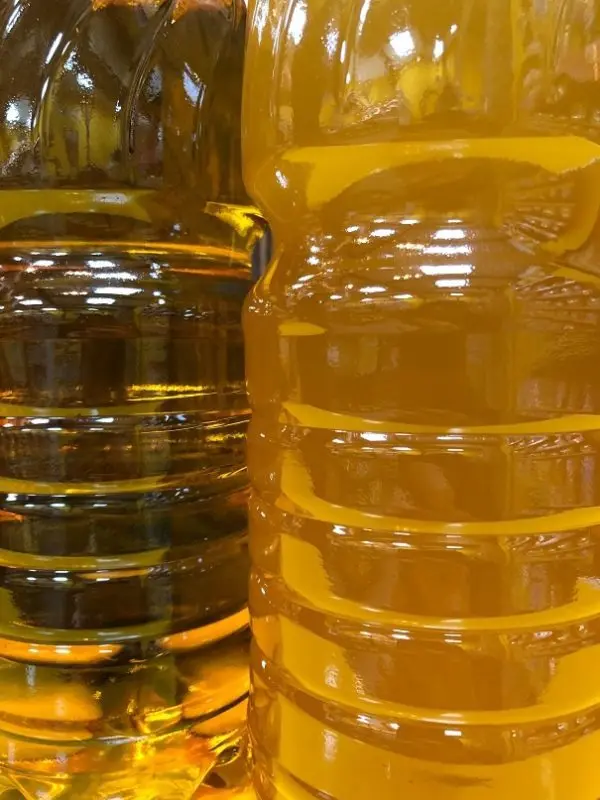Contents
Unfiltered (“live”) beer is loved by gourmets around the world. Connoisseurs say that this drink has a lot of useful properties and is almost completely devoid of the disadvantages of ordinary pasteurized beer: an indistinct average taste without a “zest”, a weak aroma and an almost complete lack of vitamins.
Short story
In fact, we should rather talk about the history of filtered beer – in the old days, all ales were unfiltered, since the technologies for filtration, separation and pasteurization, which will be discussed later, simply did not exist. The modern fashion for live beer is just a return to the roots.
The type of fermentation is very important. In the production of a foamy drink, two types of yeast are used: “top” and “bottom”. The latter love the cold and die at room temperature, but the former feel great even at 20-25 degrees Celsius, so traditionally real unfiltered beer is obtained from top-fermenting yeast (called “ale”). Before the invention of the refrigerator, it was very difficult to constantly maintain a temperature of 7-10 ° C that was comfortable for bottom-fermenting yeast, usually such beer (“lager”) was brewed only in winter. The share of lager in the world market is about 95%.
Benefits of unfiltered beer
The drink contains amino acids, B vitamins, enzymes, magnesium, calcium and other useful substances. In moderation, this beer is recommended for people with impaired metabolism, poor appetite, digestive system disorders, weak bones and joints. Unfiltered and pasteurized beer has a beneficial effect on the kidneys, heart and nervous system.
Features of the production of unfiltered beer
Unfiltered beer is made in exactly the same way as any other: from malted grains, yeast, hops, water and flavorings (depending on the recipe). The only difference in technology is that the drink is not subjected to thorough filtration and pasteurization, which “kill” and remove yeast, so the fermentation process does not stop even in bottles, and unfiltered beer can be stored for no more than two weeks.

The most “lively” beer, which has not even gone through basic filtration, can only be tasted at the factory, it is not available for sale. It turns out a rather specific drink with a distinct yeasty taste, which is not commercially successful, so in most cases even unfiltered beer goes through the clarification process (by separation or light filtration).
Separation looks like this: the processed raw material (in our case, beer) is poured into a centrifuge and accelerated to a speed of several thousand revolutions per minute. Under the influence of centrifugal force, all large and solid particles remain on the walls, and the liquid itself is slightly cleaned. The effect of this process is about the same as that of pre-filtering.
Sometimes on the shelves of stores come across unfiltered, but pasteurized varieties. Beer sommeliers argue that these drinks are completely devoid of all useful properties, and therefore cannot be called real live beer. The same reputation goes for beer with preservatives, which remains fresh even after 20-30 days, but the taste is hopelessly spoiled.
Why is beer filtered?
A natural question arises: if unfiltered beer is so great, why is filtering necessary? It’s simple – to increase the shelf life. When produced on an industrial scale, products are not sold out on the very first day: bottles, cans and barrels (kegs) lie in the warehouse for a couple of days, then they are transported to retail outlets throughout the country and exported abroad. At the same time, the beer should remain as fresh as on the day of bottling, and if the container has been fermenting all this time, the buyer will receive sour mash, and not an invigorating and healthy drink.
The difference between filtered and unfiltered beer
| filtered | Unfiltered |
| Keeps for several months. | Stored 5-10 days. |
| Can be poured into transparent bottles, stored in the light. | It deteriorates from sunlight, it is better to produce in dark glass bottles or cans, store in a dark place. |
| No yeast sediment. | There is yeast sediment. |
| It goes through several stages of purification, the filters trap even the smallest organic particles. | It passes only one filtration, the equipment retains only the largest fractions of fermentation products. |
| It has a less pronounced taste, color and aroma. | It has a rich taste, color and aroma. |
| Contains a small amount of vitamins and amino acids. | The content of nutrients is 10 times higher than in filtered beer. |
| Transparent, no sediment. | Cloudy, visible to the naked eye. |
| Less calories. | More calories. |

Types and manufacturers
Wheat unfiltered beer is especially popular – soft enough to smooth out the harsh taste of yeast sediment, has a pleasant taste and aroma. Some doctors and sports trainers even recommend drinking this drink after intense workouts to replenish fluid loss and quickly restore strength due to the carbohydrates contained in beer.
Wheat beer appeared no later than two thousand years ago (and most likely earlier), but has always been inferior in popularity to its dark barley counterpart. Firstly, because of the low strength, and secondly, in the famine years it was a pity to transfer good white grain to alcohol instead of bread. The “father” of wheat brewing is considered to be Baron Hans Degenberg, who in the middle of the XNUMXth century was the first to receive a patent for the exclusive right to produce this particular light variety.

In the production of unfiltered wheat beer, German, Belgian and Dutch brewers have achieved particular success. The best brands are Erdinger, Franziskaner, Paulaner, Hoegaarden. Some of these producers use special author’s technologies – for example, they add an additional portion of yeast to already bottled beer in order to obtain the so-called two-stage fermentation. Another technique involves brewing beer from unsprouted wheat, while the proportion of additives (barley and oats) can reach 55% or even more.
In Russia, the term “unfiltered” can be found on the products of many manufacturers, from Baltika to Ochakovo, but these brands can hardly be considered worthy representatives of the “live” class. If you want to definitely try domestic examples, it is better to find a home brewery or craft production – we recall that unfiltered beer is practically not produced on an industrial scale, because it has a short shelf life.
How to drink unfiltered beer
Unfiltered beer is poured into tall transparent glasses, trying not to provoke too active foaming. At the same time, the yeast sediment is not poured out, but on the contrary, it is carefully added to the glass – the taste is not the same without it. Serving temperature – 5-12 ° C (it is recommended to follow the manufacturer’s recommendations).

Gourmets say that light unfiltered varieties have subtle notes of lime, citrus, even blackcurrant and freshly cut grass, so lighter snacks are required for it – for example, cold cuts, croutons with cheese.









